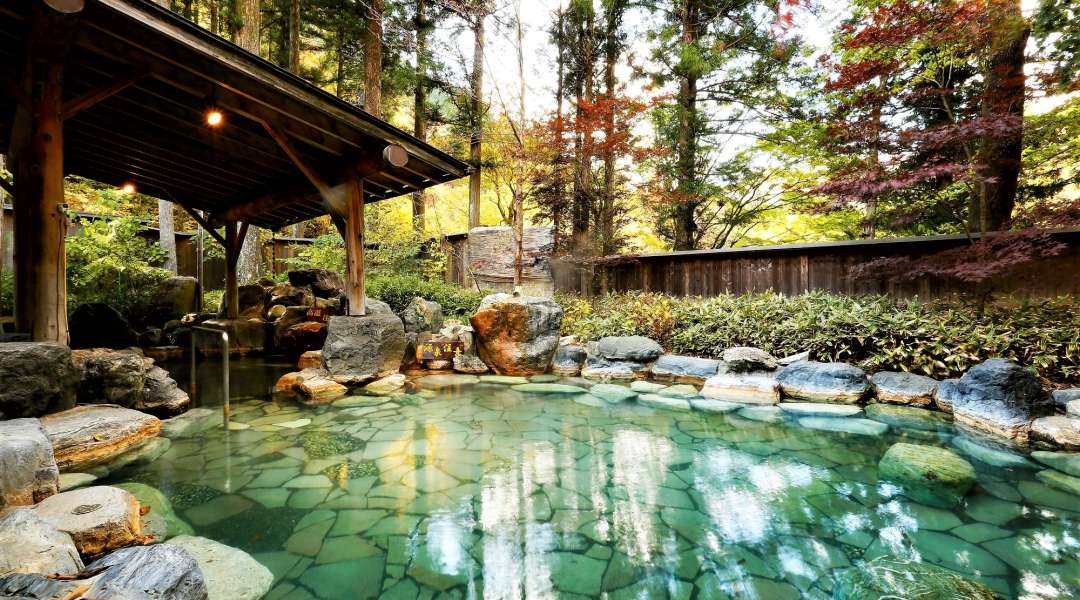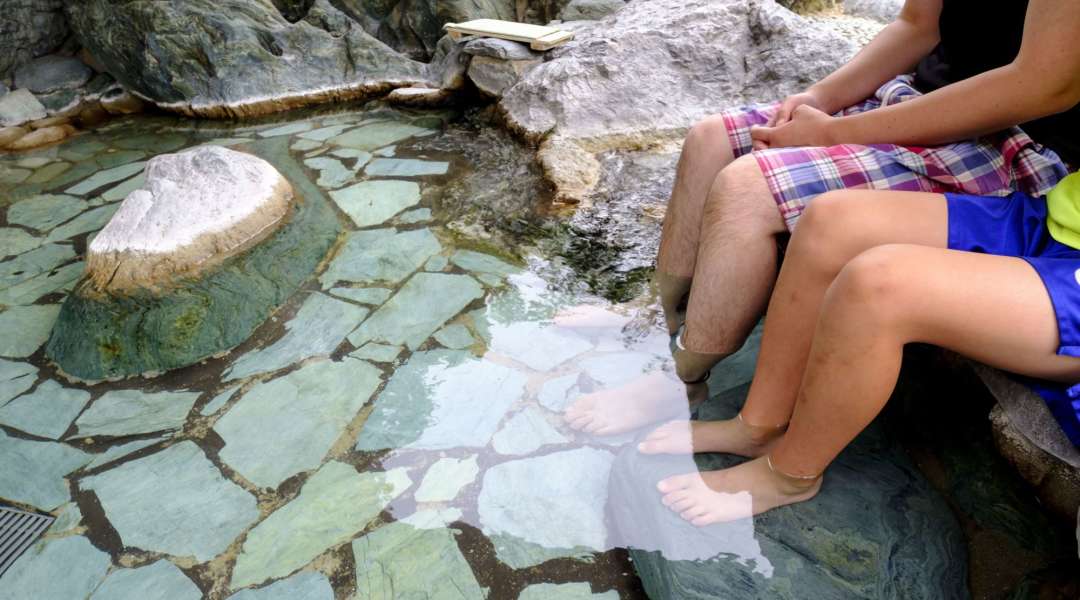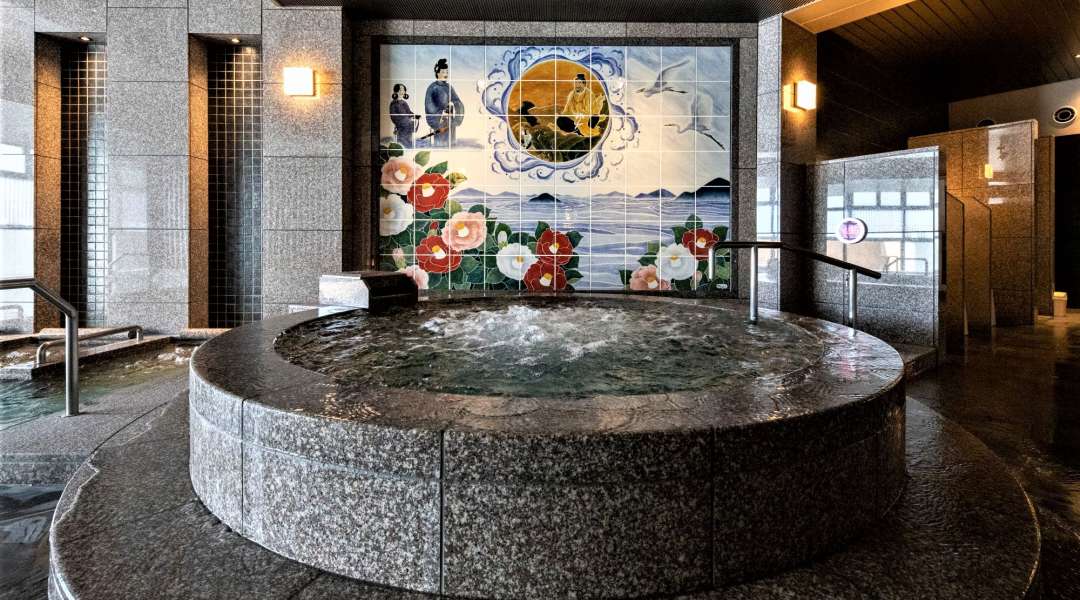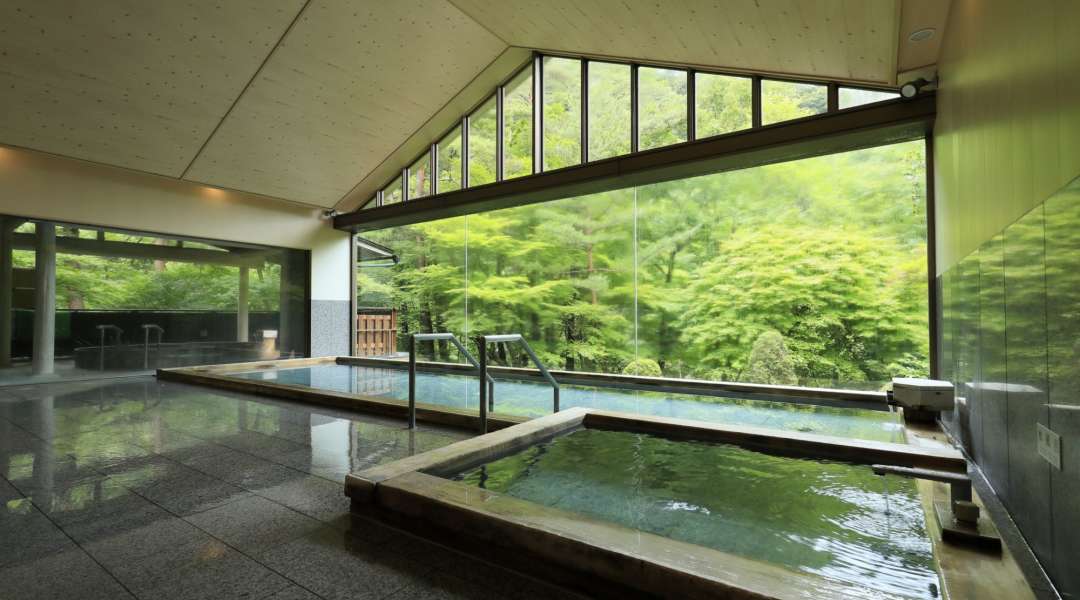 An intrinsic part of both Japanese culture, as well as spiritual thinking, hot springs or 'onsen' are much more than just a hot bath. With more natural geothermal sources than any other country, Japan houses over 2,300 hot spring facilities up and down its archipelago, often clustered together in hot spring villages, like Kurokawa Onsen or Ginzan Onsen (the clue is in the name!).
An intrinsic part of both Japanese culture, as well as spiritual thinking, hot springs or 'onsen' are much more than just a hot bath. With more natural geothermal sources than any other country, Japan houses over 2,300 hot spring facilities up and down its archipelago, often clustered together in hot spring villages, like Kurokawa Onsen or Ginzan Onsen (the clue is in the name!). Thus, we present to you, our guide on everything you need to know about 'onsen' before going, from the various different types and the etiquette you should follow, through to how to enjoy this Japanese delight in spite of Japan's big tattoo taboo...
 A 'rotenburo' open air bath in Minamichita Onsen
A 'rotenburo' open air bath in Minamichita Onsen
TYPES OF ONSEN
Sento vs onsen - You may also see the term ‘sento’ floating about, which is generally a more stripped back version of an onsen, that just uses normal heated water, not natural geothermal water, in its baths. They have a whole culture of their own, often with beautiful art, from the modern to the traditional. Onsen, on the other hand, need to comply with rigorous rules before they can call themselves an onsen, mainly to make sure that at least a good part of the water is from a natural, geothermal, mineral-rich source. Still, you may occasionally see the word ‘tennen’, meaning ‘natural’, added to ‘onsen’ to help differentiate between the two.Ryokan and hotels - Whilst some onsen operate solely as hot springs with paid-entry for day-use, many traditional ryokan inns and hotels will also offer more than one onsen option to overnight guests, some of them complementary and some of them at an additional cost. These are usually also open to day-trippers, but always at a fixed price.
Public vs private - Onsen are traditionally built to be shared with other people, in the spirit of ‘skinship’, but many are also available for private use, otherwise known as ‘kashikiri’. A public onsen at an accommodation is almost always free of charge for overnight guests, while private ‘kashikiri’ onsen almost always come at a cost and need to be reserved in advance or at the front desk, where you will receive a key. Alternatively, many accommodations also offer completely private en-suite onsen that are included in the price of the room.
Rotenburo - Whether public or private, often the most memorable experiences are had at open-air onsen, aka ‘rotenburo’, where you can take in the fresh air and the view while you bathe. These could be in the shape of rock pools, or sometimes with a waist-high privacy barrier to help obscure your naked self from the outside world. For the best winter wonderland views, look for a ‘yukimi’ (lit. 'snow watching') onsen. You could even try an ‘ashinoyu’ geothermal footbath, often found near a station or centre of town, with a seating area and a small roof covering it.
Gender-separated vs gender-mixed - The vast majority of public onsen in Japan will be separated by male (blue) and female (red), but it is worth mentioning that mixed onsen do exist in all shapes and sizes, too (though you might need to hunt them down). For people not comfortable with open nudity or traditional gender binaries, private 'kashikiri' onsen, en-suite onsen and 'ashinoyu' footbaths are some of the other best ways to still partake in Japanese bathing culture.
 An 'ashinoyu' hot spring foot bath in Ureshino Onsen
An 'ashinoyu' hot spring foot bath in Ureshino Onsen
HOT SPRING ETIQUETTE
Nudity - Most hot springs (aside from a couple of more commercial themepark-style ones) will ask you to go in fully naked both to prevent contamination from your swimsuit and to practice a bit of 'skinship'. You will usually be provided with a small towel you can use to cover your delicates and wash yourself with before getting in, but remember that you must keep this towel out of the water, so as to not affect the purity of the water for fellow bathers.Clothing and valuables - Most places will have lockers for clothing and valuables (jewelry can discolour depending on the mineral makeup of the water) in the changing rooms but sometimes this may just be a simple basket with a number for reference (petty theft is practically non-existent in Japan, so rest assured!). If you’re staying in a hotel or ryokan, many people will change into the ‘yukata’ robes and slippers provided to them in their room, with just their underwear on underneath, before leaving their rooms to find the onsen changing rooms.
Hygiene - Once you’ve gotten undressed in the changing room and are ready to head in, grab your small towel and make your way to the washing facilities (small seated shower booths) which will usually be located just to the side of the main bath. You are expected to thoroughly wash your whole body before entering the hot spring to prevent contamination of the water. There is almost always free shampoo, body wash and conditioner, and hair dryers and even beauty products available in the changing rooms for after.
Keep your hair out of the water - Even recently washed hair is considered a potential contaminant. Take a hair tie with you if your hair is long and don’t fully submerge yourself, even if your hair is short.
No food and drink - In particular, being drunk in an onsen is not only considered impolite but may also adversely affect your health. In general, the maximum time you should stay in a hot spring is around 30min, so you won’t have to go without food or drink for long. There are also usually water coolers available in the changing rooms as well as vending machines located outside for a delicious treat post-dip (opt for a milk, if you want extra authenticity points!)
 A separate bath within a public bath in Dogo Onsen
A separate bath within a public bath in Dogo Onsen
TATTOOS
"No tattoos allowed?! Why me?!" we hear you cry! Well, way back in time, before mainstream tattoo culture, tattooing was actually used by the Japanese government as a means of punishing and keeping tabs on criminals. This culture developed, leading to criminals decorating and disguising their own tattoos, and an eventual abandonment of the official government practice. Although perceptions are definitely evolving in Japan, historically, this has meant that tattoos have partially been associated with criminality, and thus provided a basis for people with tattoos to be denied entry into family places like hot springs.However, the bottom line is that, when it comes to public onsen shared with strangers, the reality of this is very case-by-case. Many onsen owners don’t care, while fellow bathers will probably overlook small, less noticeable tattoos (eg. finger tattoos, small tattoos in hard-to-see places). Generally speaking, there is more leniency given to international visitors but it is, of course, good to be prepared for those situations where you might accidentally cause offense, in order to avoid disappointment.
Here are some tips:

A 'kashikiri' private bath at Unzauki Onsen Check in advance - Email the facility directly and ask what their rules are before you go. This is the perfect time to go through your booking agency or even your online booking platform. They may simply ask you to avoid peak times.
Tattoo seals - These are generally adhesive strips of ‘skin-coloured’ plastic, almost like a plaster, that will happily conceal a small to medium sized tattoo for the duration of your dip. Some onsen will sell them but you can also buy them online easily, or at the popular chain store, Don Quijote (which you’ll probably be visiting for souvenirs anyway). Even if you can’t successfully cover up every last inch, the thought and the effort will go a long way!
Rent a private 'kashikiri' onsen - Admittedly, this will generally come at a small additional price, and require pre-booking but you’ll have the whole thing to yourself safe in the knowledge that no-one is watching or cares. 'Kashikiri' onsen can also be rented per small group (within reason), so don’t worry if you’d like to bring a friend, significant other or family member to help split the bill.
Tattoo-friendly onsen - They exist! And are particularly well documented. Find a list here and plan your trip around one of these for ultimate peace of mind.
And finally, some useful phrases:
- 'Tatu no haitta gaikokujin desu ga, daijobu deshou ka?' (I'm just visiting Japan but I do have a tattoo - am I okay to go in?) - 'Tatu ga haitte iru no desu ga, chiisai desu' (I have a tattoo but it's only small) - 'Tatu wa koko ni haitte imasu' (My tattoo is here [point to tattoo])
- 'Tatu shiiru ga arimasu ka?' (Do you have any tattoo seals?)
- 'Tatu shiiru wa doko de kaemasu ka?' (Where can I buy a tattoo seal?)
- 'Tatu no haitta gaikokujin desu ga, kashikiri-buro wa arimasu ka?' (I have a tattoo - do you have any private kashikiri onsen?)
 A public hotel bath in Hanamaki Onsen
That's it! You're good to go. A world of geothermal goodness awaits - the real question is how many can you squeeze into the itinerary while you're there...
A public hotel bath in Hanamaki Onsen
That's it! You're good to go. A world of geothermal goodness awaits - the real question is how many can you squeeze into the itinerary while you're there...


























































